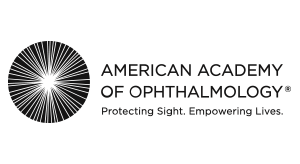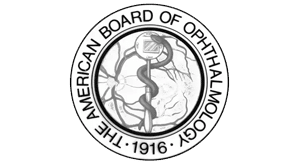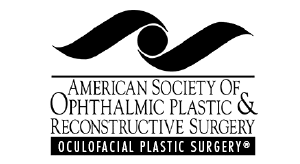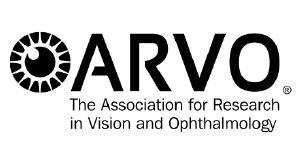Dr. Alon Kahana offers his expert perspective on blepharoplasty (eyelid surgery, eyelid lifts) drawing from years of specialized experience in oculoplastic surgery. He shares his insights on why patients seek upper eyelid rejuvenation and the emotional disconnect many feel between their internal self-image and what they see in the mirror.
Dr. Kahana explains the intricate anatomy of the eye area with compelling examples, noting how a drooping brow can be mistaken for excess eyelid skin, and how the “Roman blind effect” plays a crucial role in proper eye function. He candidly discusses revision surgeries, sharing common mistakes other surgeons make when addressing the eyelid crease.
Dr. Kahana weaves in thoughtful observations about facial asymmetry, explaining why perfect symmetry isn’t the goal and how our dynamic, expressive faces in real life differ dramatically from the “frozen” images we scrutinize in mirrors or photographs. His perspective offers both technical expertise and a refreshing philosophy on natural beauty and aging.
Transcript “Dr. Alon Kahana on Blepharoplasty”
Patients frequently come to seek our help looking for an “eyelid lift.” And when they say eyelid lift, what they really mean is that they want their upper eyelids to look better.
As we get older, our upper lids sag. They sag in a variety of ways. Sometimes the eyelids are just low, and you look kind of sleepy. Sometimes the eyelid skin hoods over the lashes or wrinkles or becomes kind of prominent and fatty. You see, the fat pads, herniating, sometimes the brow drops, and it pushes down on the eyelid skin.
So they just want to rejuvenate their eyes. They want their eyes to look like they did when they were younger. And most patients understand that no surgery can make you look like someone like you did 30 years ago, 40 years ago.
There are some irreversible changes that occur with the passage of time, but we are able to make our patients look much better, much more. Like how they think of themselves and feel better about themselves.
There is oftentimes, and I talk about that a lot with patients, there’s oftentimes an incongruence between how a patient thinks of themselves, dreams about themselves, sees themselves, and then they see themselves in the mirror or in a picture, and they’re like, who’s that?
That can’t possibly be me. And so that creates an internal conflict. And then they seek to see if they can find a way to recapture some of the energy and the youthfulness that they still have in their mind’s eye when they think about themselves.
And that’s then my job as the cosmetic surgeon, to figure out exactly what their priorities are and actually try to get them to rank their priorities. What’s most important to you? Is it your upper eyelid, or is it your lower eyelid, or is it your neck, or is it your hairline?
And because there’s no magic wand, and trying to fix everything at once is not only problematic, it’s unwise because it leads to a lot of swelling, very long surgical times, and typically suboptimal healing.
Patience is really a virtue. We try to rank what’s most important to our patients, and then we try to address them one by one. Now, my particular unique expertise is in the region around the eye, and it is such a complex, involved anatomic structure that also has very important functional role in protecting the eye while enabling our vision and our visual function.
Such an important complex area that you can actually cause a lot of harm if you try to address it without a deep understanding of the structures. Let me give you an example. Let’s say that someone comes in for an eyelid lift, they want to look rejuvenated, they want their upper lids to look better.
And they tell you, you know, all of this skin is bunching up and it makes me look old and tired. You might say, well, in that case, let’s take out the skin. But if you don’t measure it correctly, you might not realize that they don’t actually have too much skin.
What they have is a really droopy brow forehead complex. And then it creates in the upper eyelid something like a Roman blind. Where as the brow drops, it takes the skin and it folds it and then it hoods over the lashes.
And if you remove upper eyelid skin, you’ll end up with problems where the eyelid doesn’t blink properly, it doesn’t close properly, because you do need some of that Roman blind effect to be able to protect the eye and look normal. Otherwise you might look like you’re a deer in the headlights too.
You know that a lot of patients come in saying, I don’t want to look like so so, and so and so famous person in Hollywood, who’s overdone it. And no, that we don’t want that. And so that kind of a patient actually needs a brow lift or a forehead lift. And that will restore the upper eyelid skin to its normal position.
It might be that we combine it because when we measure, there is some extra skin, but it’s not nearly enough extra skin to give you that really tired hooded appearance. So that’s important to make the distinction. Sometimes there’s a combination of excess skin and also a weaker eyelid opening muscle.
so the eyelid doesn’t open. You look kind of sleepy. Used to be called Bette Davis eyes. Among people who might be familiar with, with Bette Davis, that, you know, ages me, but great actress, character actress and romance actress.
And so you need to treat that differently. A weakness in the eyelid opening muscle requires a surgery on the eyelid opening muscle. That has absolutely nothing to do with the skin. But when you tighten the muscle and the eyelid opens more, then, again you have that Roman blind effect, where the skin that you do have bunches up more.
So whether you’re pressing that skin from above with the brow dropping or you’re pressing that skin from below with the eyelid opening muscle, opening better. What you’re doing is you’re compressing that skin and now it’s hooding. Another issue I do a lot of revision surgeries.
Patients who have had cosmetic eyelid surgery and for one reason or another, are unhappy about the results. And they either come to me or they get referred to me to see if I can fix it. And one of the most common problems that I identify and have to fix is, is where the eyelid crease is.
A lot of surgeons will just remove the skin, and they do a great job doing that, but then they leave it to kind of the random effect of healing. For where that eyelid skin will fold, it needs to fold in a particular place, and it might end up folding a millimeter or two in a different place on the right side compared to the left side.
So now you measure the amount of skin, and it’s the same. But why do they look so different? Well, because the eyelid crease is a very complex structure that involves the muscles, multiple muscles of the eyelid, the eyelid opening muscles, the eyelid closing muscles, and the skin.
And where that happens needs to be clearly identified and defined during the cosmetic surgery. Otherwise, you’re leaving too much to chance. And sometimes you win, and sometimes you lose. And I don’t want to gamble on my patient’s results.
I don’t think patients come to me wanting to gamble on their results. And so that’s, you know, these are all things that you acquire over time, doing these surgeries a lot, meeting a lot of patients, including patients who have had bad results and come to you and say, hey, can you.
Can you improve this? And you think, gosh, the surgery was done well, the amount of skin is the same. The eyelid contouring position are good, and yet there is an asymmetry. Why is that? Well, it’s because of the lid crease, or maybe the amount of fat that was removed, or the positioning of the fat that was removed was different between the sides.
Symmetry is really important. I also want to emphasize that there is no perfect symmetry in a living human being. Perfect symmetry is a Michelangelo statue. It does not happen in a living, breathing human being.
And we actually don’t want to create perfect symmetry. And I’ll explain that momentarily. But first of all, why is it that the two sides of the face are not symmetric? You probably know that one arm is a little longer than the other. One leg is a little longer than the other. My tailor knows that my left shoulder is ever so slightly lower than my right shoulder.
I didn’t even know. But my tailor looking, measuring, says, well, there’s about between a quarter and a half an inch difference in the height of your shoulders. And so he can compensate for that by adjusting the way that he Tailors my jacket.
So the two sides are never exactly the same. And with the face, the way that the face develops is you have two streams of cells. The right side of the face, the left side of the face, and they come together and they meet at the midline.
And that’s the midline structure just across us. And, you know, there are structures that are unique to the midline. Various clefts that you have along the midline are the result of these structures that come together and then fuse. There are, by the way, congenital syndromes in which that fusion occurs incorrectly.
And we need to deal with that when it impacts the lip, the palate, the eyelid, the nasal, midface structures. But each side develops on its own and then they fuse. Every person has a dominant face side and a non-dominant.
So my left side is my dominant side. It’s a little bigger, slightly wider and bigger than my right side. Too much asymmetry is undesirable, but some asymmetry is cute.
It’s sexy, it’s human. Think of the smirk, the wink. When young people take their pictures on Instagram, it’s never straight face. It’s always at a slight angle because it’s cute.
When you look at the starlets on the red carpet, and that’s going to happen soon with the Oscars and all of that, they never allow any photographer to take their picture standing straight, staring. There’s always one leg in front of the other, one shoulder in front of the other. Maybe their head is slightly turned and they’re looking at you with a slight tilt of the eye.
It’s cute. Perfect symmetry is an ideal that only works if you’re in a Renaissance painting. The problem is that when people look at themselves in the mirror. When they’re staring at themselves, and now I’m talking to women who are putting on makeup, though they everyday stare at themselves with a face that is kind of frozen as they’re doing things.
That’s not how anybody sees you. Or in a photograph that captures a frozen version of you, you’re like, oh, wow. You know, the right crease here is slightly different than the crease on that side.
Well, but that’s when you, when you interact in a human way, you’re smiling, you’re talking, you’re shaking your head, you’re blinking your eyes, you’re moving your neck. That’s how people actually interact with you and see you. And that’s not the same as the frozen version of you.
When you look at some of the stars and starlets who look weird, you ask, how did they allow themselves to look like that? Well, it’s because they see themselves in photographs.
Because they get photographed all the time. And if you take someone who looks totally weird in real life, but from a particular angle, with particular lighting in a particular way, it looks fantastic. Okay? It looks just right. And the moment you shift it a little bit, it looks so weird.





